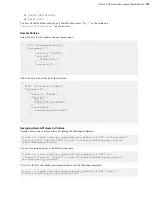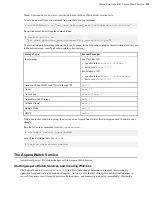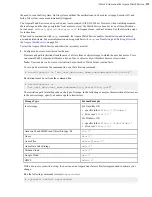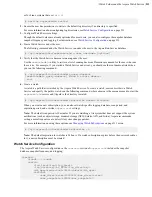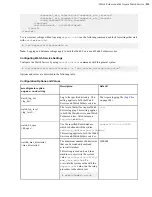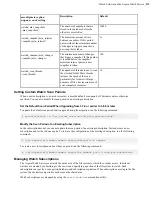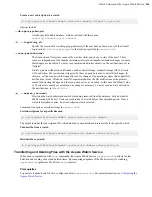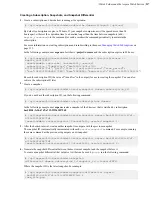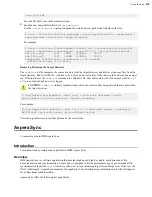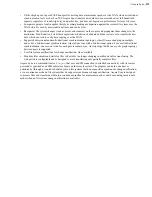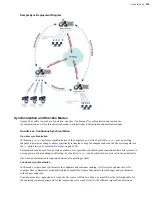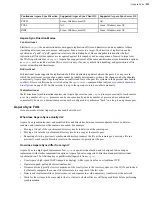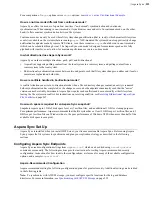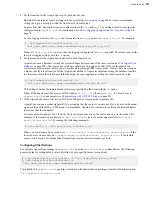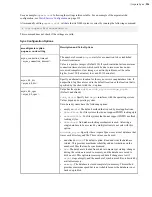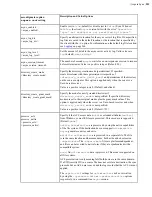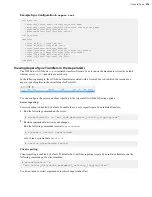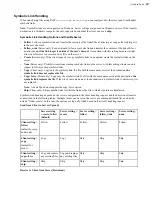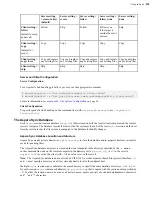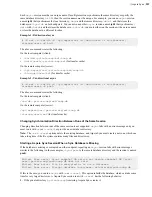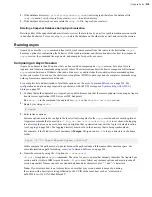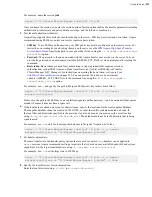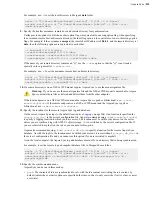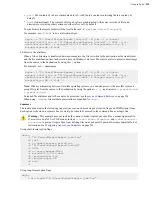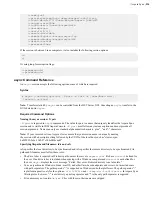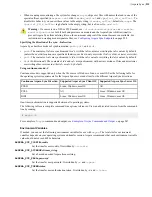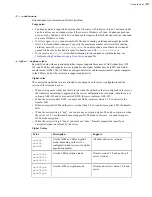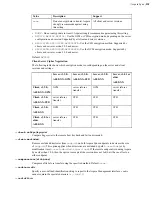
| Aspera Sync |
223
1.
Set the location for the Aspera Sync log for each transfer user.
By default, Aspera Sync events are logged to the system log (see
on page 264). Aspera recommends
setting the log to a directory within the transfer user's home folder.
Log location, size, and log level can be configured for both
ascp
and
async
by setting default or user-specific
configurations in
aspera.conf
. For instructions, see
Server Logging Configuration for Ascp and Ascp 4
on
page 78.
To set a logging directory for
async
that is separate from
ascp
, you can set
async_log_dir
. For example:
# /opt/aspera/bin/asconfigurator -x
"set_user_data;user_name,
username
;async_log_dir,
log_dir
"
Note:
If
async_log_dir
is not set, then the logging configuration for
ascp
is applied. The client can override
the server logging settings with the
-R
option.
2.
Set the location for the Aspera Sync database for each transfer user.
Aspera Sync uses a database to track file system changes between runs of the same session (see
on page 228). The Aspera Sync database should not be located on CIFS, NFS, or other shared file
systems mounted on Linux, unless you are synchronizing through IBM Aspera Proxy. If server data are stored on
a mount, specify a local location for the Aspera Sync database. Aspera recommends setting the database location
to a directory within the user's home folder by using the same approach as setting the local Aspera Sync log:
# /opt/aspera/bin/asconfigurator -x
"set_user_data;user_name,
username
;async_db_dir,
db_dir
"
This setting overrides the remote database directory specified by the client with the
-B
option.
Note:
If the transfer user's docroot is a URL (such as
file:////*
), then
async_db_dir
must be set in
aspera.conf
. For an example, see
Synchronizing with AWS S3 Storage
on page 253.
3.
If the Aspera Sync source files are on a NFS or CIFS mount, create a mount signature file.
Aspera Sync can use a mount signature file to recognize that the source is on a mount. If you do not use the mount
signature file and the NFS or CIFS mount is unreachable, Aspera Sync considers those files as deleted and delete
them from the other endpoint.
To create a mount signature file, create the file in the parent directory of the source directory on the mount. For
example, if the Aspera Sync directory is
/mnt/sync/data
, create the mount signature file
/mnt/sync/
mount_signature.txt
by running the following command:
# echo mount >> /mnt/sync/mount_signature.txt
When you run a Aspera Sync session, use
--local-mount-signature=mount_signature.txt
if the
local source is on a mount and
--remote-mount-signature=mount_signature.txt
if the remote
source is on a mount. For bidirectional Aspera Sync sessions between mounts, use both.
Configuring Other Settings
To configure Aspera Sync settings in
aspera.conf
by using
asconfigurator
commands, use the following
general syntax for setting default values (first line) or user-specific values (second line):
# /opt/aspera/bin/asconfigurator -x "set_node_data;
option
,
value
"
# /opt/aspera/bin/asconfigurator -x
"set_user_data;user_name,
username
;
option
,
value
"
To manually edit
aspera.conf
, open it in a text editor with administrative privileges from the following location:
/opt/aspera/etc/aspera.conf

